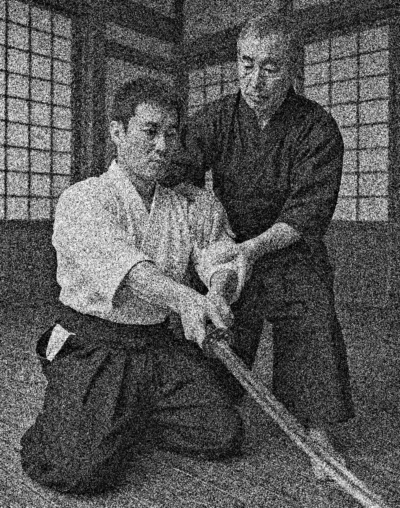Even the first weeks of training demand concentration, precision, and body awareness. Beginners quickly learn: movements that look simple are not easy to execute. Common challenges arise.
Too much force, too little structure
Many beginners, eager to wield the sword “powerfully,” focus on sheer strength to “make an impact.” For example, the vertical cut (Tate-giri 縦切り) should have a sharp accent and a clean sound (= Sae). But force alone cannot replace proper technique. What matters is executing the cut and posture within a clear structural framework from the outset. When the body and feet are aligned stably and the movement is driven from a strong core, the sword almost naturally follows the ideal path.
Unclear starting/ending positions
What applies to sword movements also extends to the body. From the first moment of a kata to the final step, it’s essential to know: Where the body is positioned. Where the gaze is directed. How the sword is guided.
Even during warm-up exercises (Suburi), every point must have purpose—nothing should happen “randomly.” A common pitfall is over-focusing on the sword, causing tension in the shoulders and chest. This must be avoided through physical training. A well-conditioned body ultimately enhances sword technique.
Drawing the sword (nukitsuke) – power from the core
A key movement in Iaido is drawing and cutting. The power should not come from the arms alone but from the Hara—the body’s center of gravity, located just below the navel. Western equivalents like the “core” or “powerhouse” (deep muscles of the abdomen, back, and pelvis) emphasize stability, balance, and efficient force transfer. Activating this core during drawing results in smoother, more controlled motion with less effort—and reduces injury risk.
Rushing techniques
Beginners often want to perform entire kata quickly. But prioritizing speed over precision sacrifices control of angles, sword alignment, and posture. Better: Master each movement individually before transitioning to fluid sequences.
Zanshin – sustained awareness
Zanshin (“lingering mind”) is a state where focus and presence endure even after a technique ends. Beginners may struggle to maintain this concentration, yet it’s what gives movements completeness. Zanshin isn’t an added action but the natural extension of focus—a readiness for whatever follows.
Neglecting basics (e.g. nōtō/sheathing)
Sheathing the sword seems trivial but is technically demanding. Many treat it as an afterthought, leading to sloppy motion or self-endangerment (especially with a live blade, shinken). Iaido teaches unwavering focus even here—an opponent (or ally) could attack at any moment (see Inyoshintai kata).
Conclusion
Iaido isn’t just linking movements; it’s the interplay of technique, posture, awareness, and inner calm. Conscious practice from day one builds the foundation for clean, powerful, and authentic swordsmanship. Mistakes aren’t obstacles but guides—Ganbatte!
